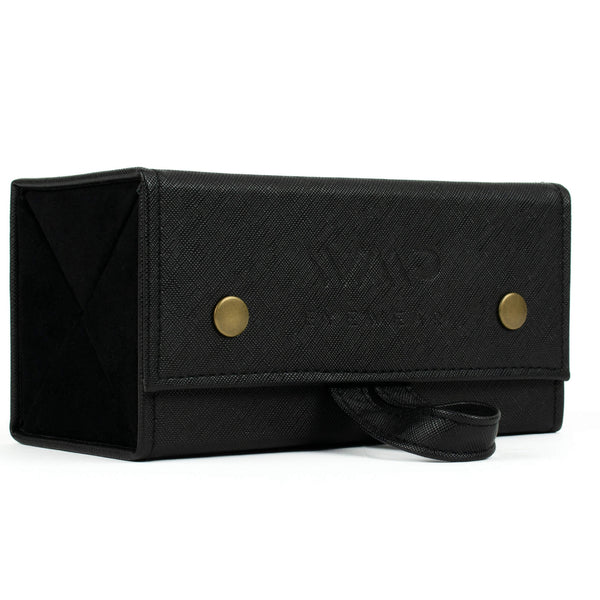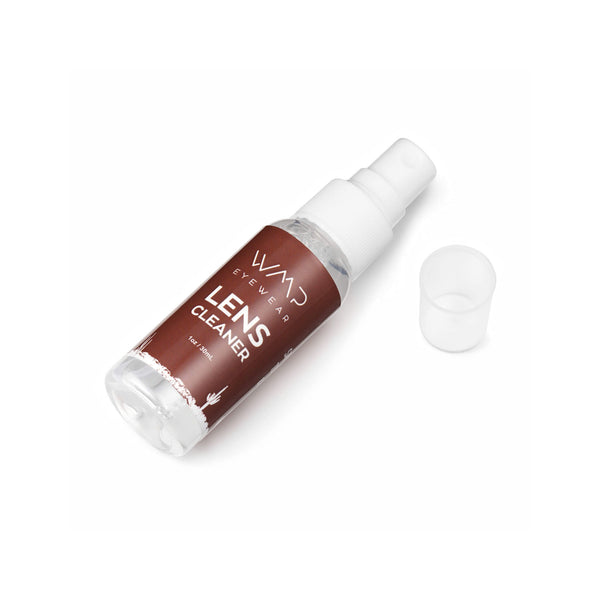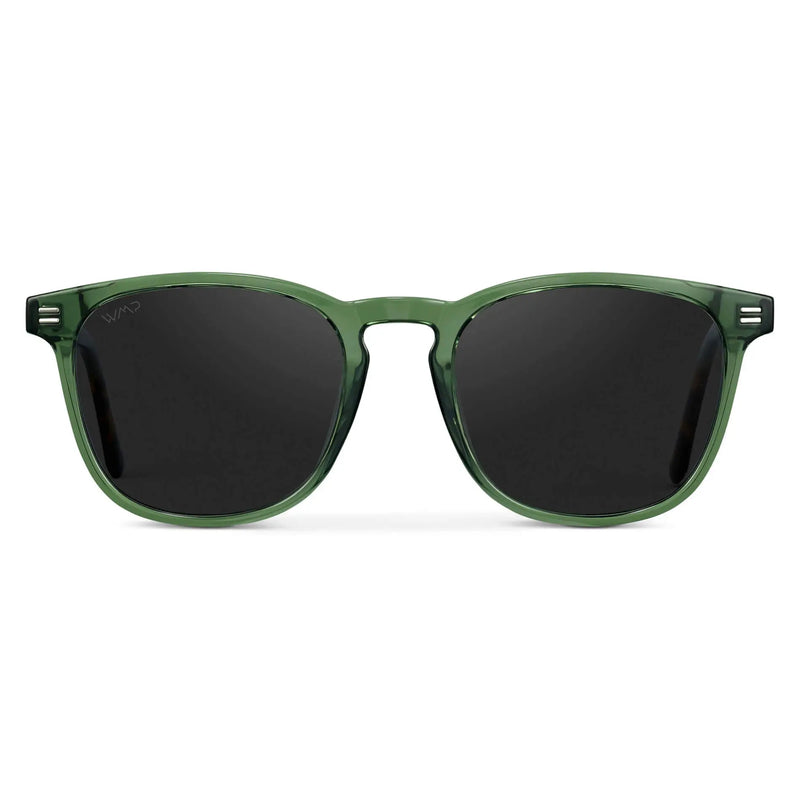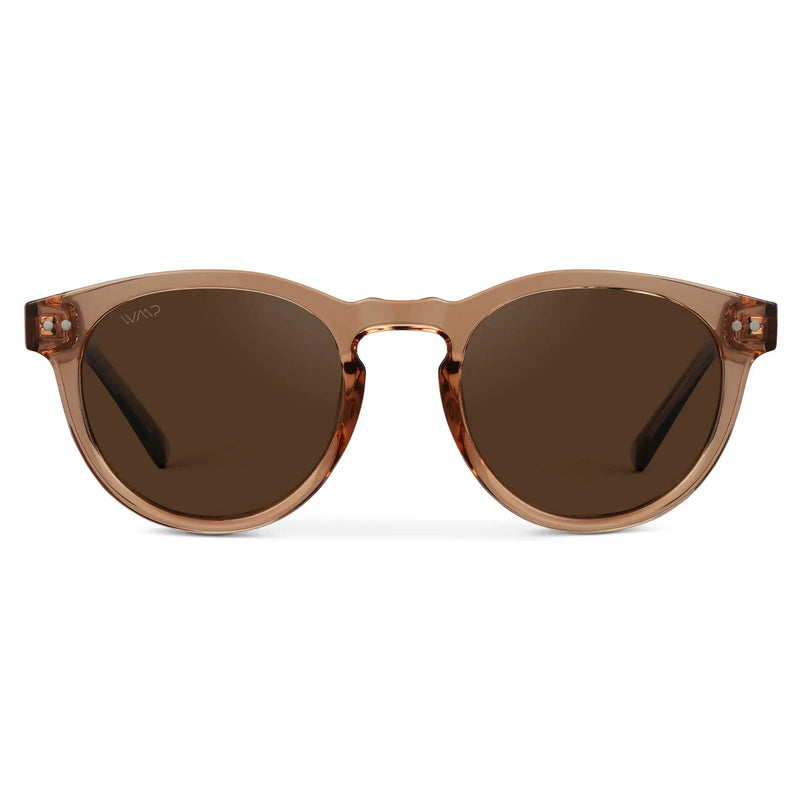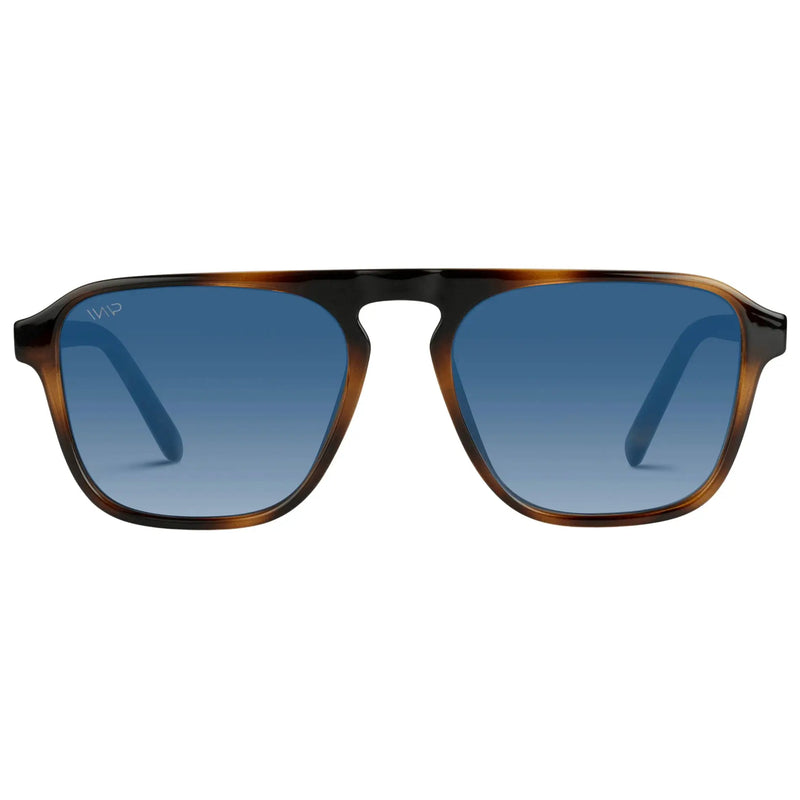Top 4 Iconic Sunglasses Styles and Their History

The first pair of sunglasses were lackluster to say the least. Imagine two crude slabs of smoked quartz lashed to a makeshift metal frame—it probably looked about as stylish as is it sounds.
Although we don’t have any photographic evidence (that first pair was made in 12th century China, after all) we’re pretty certain that those first pairs of “sunnies” were nothing Versace or Prada would want to slap a label on and advertise in the glossy pages of Vogue or Cosmopolitan.
Thankfully, eyewear tech has come an extremely long way since those early days. Despite the fast-paced laws of the fashion world, a handful of sunglasses styles have managed to beat the odds and prove themselves as timelessly stylish, evergreen designs.
History of Round Sunglasses
Round sunglasses are equal parts Zen and all-out rock n’ roll. Popular with the back-then hippies and modern-day hipsters, retro round sunglasses ooze creativity and boast an unbridled, free spirit. John Lennon, Ozzy Osbourne, Janis Joplin, and Elton John are just a handful of the music industry bigwigs who claimed circular frames as a part of their signature looks.
Circular glasses in general have a vintage feel for a good reason: they’ve pretty much been around since the beginning. In fact, the very first pair of “hands-free” wearable glasses (invented in 13th century Italy) featured circular frames. For centuries afterwards, round glasses remained pretty much the only option.
While the lack of choices probably sounds pretty bland to you and me, it really didn’t bother 13th century Italians. After all, only the high-class, literate elite had a reason or the means to even think about purchasing a pair. With technology centuries away from mass production, all round glasses of that era were handcrafted and incredibly expensive, making them more of a status symbol than a fashion statement.
Skip ahead about six-hundred years and round glasses still had dibs on the eyewear market. In fact, when Sam Foster created the first commercial sunglasses in 1929, there was no question as to what shape that initial pair should be—circular frames seemed the only real choice.
Over the next decade sunglasses blew up. Round sunglasses remained the status-quo until WWII hit, causing circular frames to lose popularity to newly developed, military-inspired aviator designs.
In the years following the war, round shades slowly slipped out of the limelight entirely. The post-war consumer boom demanded fresh designs, bold motifs, and experimentation in the fashion world. With consumers hungry for looks that embraced the unconventional, round sunglasses were quickly replaced with cat-eye shades, aviators, horn-rimmed sunglasses, and other wilder styles.
Round shades slowly entered retirement—but only temporarily! By the mid-1960s, circular sunglasses catapulted back into high fashion. Fueled by radical anti-consumerist movements, more and more young people ditched commercial retailers in favor of vintage shops. Young rebels boycotted commercialism, opting to wear their parent’s “outdated” circular sunglasses, making a statement that was equal parts political and fashionable.
As the trend took hold, manufacturers caught on and re-booted the mass-production of round sunglasses, now with brightly tinted lenses. As symbols of rebellion, youth, and creativity, they were dubbed “hippie sunglasses” and eventually came to be known as the unofficial eyewear of the anti-war movement.
As manufacturing processes improved, lens sizes gradually expanded. By the 70s, smaller frames had been replaced by oversized, statement lenses that screamed pop art and modernism.
Round-shaped frames stayed popular well through the 90s and are somehow still incredibly fashionable today. From their origins as a symbol of intelligence and status to their rebirth as marks of rebellion and creativity, round specs have always been statement eyewear.
History of Aviator Sunglasses
They’re suave, they’re sophisticated, and they offer great UV protection. With a teardrop shape and broad-cover lenses, aviators are arguably the most popular style of sunglasses. Wearing them makes you feel like a debonair air pilot or an off-duty celebrity ducking paparazzi on a coffee run. Jokes aside, the best thing about aviator sunglasses is that they look good on literally anyone.
We’re not going to say that the invention of aviator sunglasses revolutionized flight and played a role in the outcomings of WWII, but if we did it wouldn’t exactly be a lie. No eyewear origin is quite as dramatic or noteworthy as the aviator’s. If you want to a story that features suave US airmen, the perils of war, and the glitz of celebrity glamour, the history of aviator sunglasses has you covered.
Seven years after Sam Foster peddled the first commercial shades on the beaches of Atlantic City in 1929, aviator sunglasses entered the scene. Invented by New Jersey-based eye health company Bausch & Lomb, aviators were designed specifically to meet the needs of American military airmen—earning them their iconic name.

In comparison to the era’s clunkier (and admittedly dorkier-looking) flying goggles, pilots welcomed aviators as a lighter-weight alternative. These new glasses were sleek and fashionable. Best of all, their tinted lenses offered increased protection against harmful UV rays.
When Polaroid Corporation co-founder Edwin H. Land first implemented polarized elements to their lenses, black aviator sunglasses quickly became a standard-issue equipment and an essential part of the US airman’s uniform. With a full-cover, broad design and new polarized lens technology, pilots could see clearly, navigate safely during airstrikes, and perform with increased precision.
The style received an even bigger boost when celebrated military official General Douglas MacArthur was famously photographed sporting aviator sunglasses on a beach in the Philippines. Photos from that landing exploded in the American press, eventually leading it to become one of the most iconic images of the Second World War.
Seeing the increased press as the perfect opportunity, Bausch & Lomb jumped on the chance for a bit of free advertising. In 1945 they announced the release of a new line of aviator sunglasses dedicated as a tribute to General Douglas MacArthur himself. The glasses were mass-produced, marketed to the public, and wildly popular. Soon, high-status celebrities and average Americans alike were sporting their very own Aviator sunglasses, leading to a mass boom of their commercial production—the rest, as they say, is history.
Since then, the aviator has become known as an iconic staple of the classic American look.
Even decades after the war, the style held its place in pop-culture and high couture alike, eventually becoming a staple of big-name celebrities like Michael Jackson, Freddie Mercury, and Elvis Presley.
History of Semi-Rimless Sunglasses
With an accentuated browline and clean-cut vibe, semi-rimless sunglasses have the perfect hint of debonair class. They offer a little something for everyone, with angular styles for a more masculine look or arching, horn-rimmed lines for a feminine touch.
Rimless and semi-rimless glasses have come in many different forms throughout the years, but if you’re shopping for semi-rimless sunglasses in this day and age, there’s a pretty good chance you’re after a classic “browline” look. Featuring an angular, wayfarer-styled upper half and a tapered, rimless bottom, semi-rimless sunglasses as we know them today were first produced by eyeglass company Shuron Ltd. in 1947.
Just a few years after their invention semi-rimless glasses absolutely exploded, becoming one of the eras most emblematic fashion pieces. In fact, the style accounted for about half of all eyewear sold between 1950 and 1960.
The style enjoyed almost 20 years of wild popularity until the 1970s hit. With rebellion in the air, the new hippie subculture tossed all aspects of the fashion world into an upturned daze. As a result, the formerly popular semi-rimless style caught a reputation as boring and overly conservative, causing consumers to ditch their angular wayfarer and browline frames in favor of rounder, more unconventional styles.
When the 80s rolled around the style received another shot at mass-popularity. At the time, American comedy-drama series Moonlighting was a big-time favorite. The show followed Bruce Willis, who played a charming and funny private detective who regularly wore a pair of tinted Shuron Ronsirs browline frames.
Noticing the show’s popularity as a chance to capitalize and make a quick buck, eyewear giant Ray-Ban hopped on the train and started manufacturing their own line of browline sunglasses. They dubbed the style “Clubmasters”—a name that nods at the style’s high-class yacht-owner look and feel. The term stuck; now, semi-rimless sunglasses and browline specs are commonly referred to as “clubmasters” regardless of who manufactures them.
The half-frame look stayed mildly popular through the next couple of decades until the early 2000s, when it received another enormous boost from the television industry. Spurred by the mass-popularity of the Golden Globe awarded television series Mad Men, the semi-rimless browline skyrocketed back into high fashion and shows no signs of ever coming down.
History of Cat-eye Sunglasses
No eyewear style makes a bolder statement than the cat-eye. With a delicately arched browline and gentle angles, cat-eye sunglasses hit that sweet spot between bold and graceful with a little twist of cinematic flair. They’re best known as fashion staples of style icons like Audrey Hepburn, Lisa Loeb, Elizabeth Taylor, Marilyn Monroe, and even Barbie herself.
Eyewear fashion was a man’s world for decades before cat-eye sunglasses arrived to shake up the scene. Until 1930, pretty much all sunnies were manufactured and marketed exclusively to men, forcing women to choose from a long line of boxy, masculine frames.
Fed up by the frank lack of style in the male-dominated eyewear industry, Atlina Schinasi set out to design frames that answered women’s prayers for a more delicate, feminine look. The end-result, which she dubbed “Harlequin” because of its angled similarity to Venetian carnival masks, was shrugged off by every male optician she pitched it to. After a lot of rejection, she finally found an admirer; one little NYC boutique agreed to adopt her line.
The style’s popularity was explosive. Alongside the glasses of that era, the Harlequin's shape truly stood out. Serving as the perfect opposite of the ultra-masculine military appeal of aviators and the conservative rigidity of wayfarers, the style quickly became popular among American housewives as well as celebrities.
With its booming popularization, the design was re-named “cat-eye” glasses—a title that nodded to the style’s sassy, feminine spirit. The most intricate models were adorned with gold detailing or tiny metallic stars to add a little touch of glitz and glamour.
Although the look remained in vogue well through the 1940s, 1950s, and 1950s, cat-eye sunglasses reached a whole new level of popularity when Audrey Hepburn famously sported a pair of Oliver Goldsmith oversized cat-eye frames in the 1961 cinematic classic Breakfast at Tiffany’s. The film’s astounding success and Hepburn’s rising fame brought cat-eye glasses into the white-hot spotlight of the fashion world, where it’s pretty much stayed ever since.
At nearly a century old, cat-eye sunglasses have beat the fast-paced laws of fashion and remained popular through the decades—likely due to the style’s ability to adapt. Every decade since 1930 has seen its own version of the cat-eye look, with designs ranging from the sharp and narrow frames of the 1940s to the more gently rounded, oversized lenses of the 1960s and 1970s.
Now, there’s a cat-eye look for pretty much everyone, and even polarized cat-eye sunglasses which are ideal for driving, watersports, and daily wear. Even some of today’s hottest celebrities— Kourtney Kardashian, Bella Hadid, Rihanna, Nicki Minaj and Katy Perry—have all been spotted rocking feline-esque frames.


